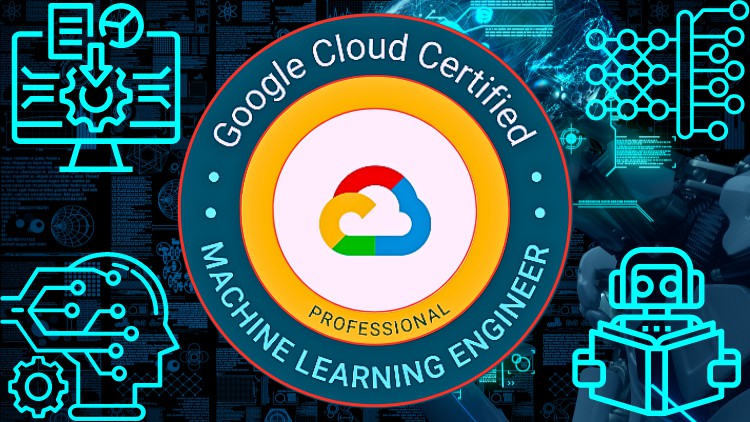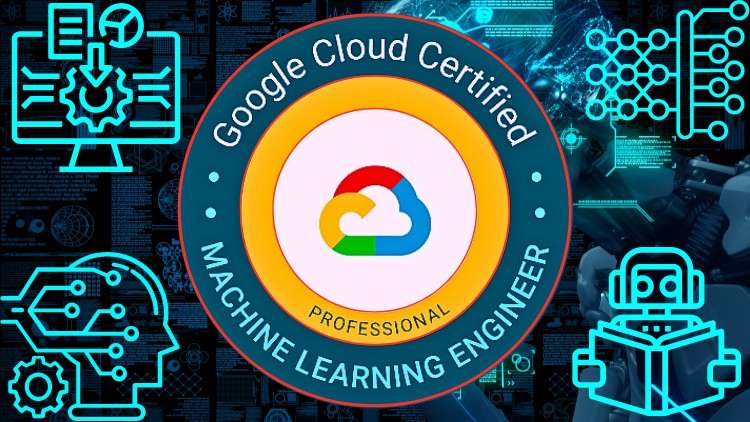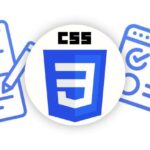
Grasp ML Algorithms, Knowledge Modeling, TensorFlow & Google Cloud AI/ML Providers. 137 Questions, Solutions with Explanations
What you’ll study
Framing ML issues
Architecting ML options
Designing knowledge preparation and processing programs
Creating ML fashions
Automating and orchestrating ML pipelines
Monitoring, optimizing, and sustaining ML options
Description
- Translate enterprise challenges into ML use instances
- Select the optimum resolution (ML vs non-ML, customized vs pre-packaged)
- Outline how the mannequin output ought to clear up the enterprise drawback
- Establish knowledge sources (out there vs splendid)
- Outline ML issues (drawback sort, end result of predictions, enter and output codecs)
- Outline enterprise success standards (alignment of ML metrics, key outcomes)
- Establish dangers to ML options (assess enterprise affect, ML resolution readiness, knowledge readiness)
- Design dependable, scalable, and out there ML options
- Select acceptable ML companies and elements
- Design knowledge exploration/evaluation, characteristic engineering, logging/administration, automation, orchestration, monitoring, and serving methods
- Consider Google Cloud {hardware} choices (CPU, GPU, TPU, edge units)
- Design architectures that adjust to safety considerations throughout sectors
- Discover knowledge (visualization, statistical fundamentals, knowledge high quality, knowledge constraints)
- Construct knowledge pipelines (arrange and optimize datasets, deal with lacking knowledge and outliers, forestall knowledge leakage)
- Create enter options (guarantee knowledge pre-processing consistency, encode structured knowledge, handle characteristic choice, deal with class imbalance, use transformations)
- Construct fashions (select framework, interpretability, switch studying, knowledge augmentation, semi-supervised studying, handle overfitting/underfitting)
- Prepare fashions (ingest numerous file sorts, handle coaching environments, tune hyperparameters, monitor coaching metrics)
- Check fashions (conduct unit exams, examine mannequin efficiency, leverage Vertex AI for mannequin explainability)
- Scale mannequin coaching and serving (distribute coaching, scale prediction service)
- Design and implement coaching pipelines (establish elements, handle orchestration framework, devise hybrid or multicloud methods, use TFX elements)
- Implement serving pipelines (handle serving choices, take a look at for goal efficiency, configure schedules)
- Observe and audit metadata (arrange and monitor experiments, handle mannequin/dataset versioning, perceive mannequin/dataset lineage)
- Monitor and troubleshoot ML options (measure efficiency, log methods, set up steady analysis metrics)
- Tune efficiency for coaching and serving in manufacturing (optimize enter pipeline, make use of simplification strategies)
Content material
Introduction
Tensorflow, Tensorflow on Google Cloud
Vertex AI
BigQuery ML
Apply Questions & Solutions
The put up Google Licensed Skilled Machine Studying Engineer appeared first on destinforeverything.com/cms.
Please Wait 10 Sec After Clicking the "Enroll For Free" button.








